Fix Error 0X800F080C on Windows
Some Windows users are reporting that they end up seeing the error code 0X800F080C when trying to install a missing .NET Framework package or when attempting to launch certain applications on their Windows computer.
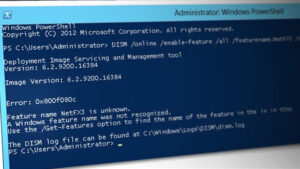
After looking at various user reports, it turns out that there are several different scenarios that might cause the 0X800F080C error when performing certain actions. Here’s a list of potential culprits that might be causing this error code:
- .NET Framework can not be enabled via Powershell – As it turns out, it’s very likely that Windows 10 will prevent you from enabling an installed but disable instance of the .NET Framework via the terminal. Fortunately, several affected users that were also encountering this issue have reported that the issue was resolved after enabling the framework via the Windows Features screen.
- Corrupted .NET Framework dependencies – According to some affected users, this particular issue can also occur due to some type of corrupted .NET Framework dependencies that are affecting the installation of a new version. In this case, you should be able to repair the corrupted instances by running the .NET Repair Tool.
- System File Corruption – Under certain circumstances, you can expect to see this error code to occur due to some type of corruption affecting Windows files responsible for mitigating software infrastructures necessary for the installation of 3rd party programs. In this case, you can resolve the issue by running a couple of utilities capable of replacing corrupted files with healthy equivalents or by running repair install or clean install procedures.
Now that you are familiar with every potential culprit that might be causing this error code, here’s a list of verified methods that other affected users have successfully used to get to the bottom of this issue:
Method 1: Enabling 3.5 .NET Framework via Windows Features (if applicable)
If you were previously encountering the 0X800F080C error code while attempting to enable a missing .NET Framework from a CMD or Powershell terminal window, you might be able to avoid the error altogether by enabling the framework directly from the Windows Features screen.
But keep in mind that Windows 10 already includes an archive of .NET Framework version 3.5, you just have to prompt it to install. Some users that were previously encountering the error code 0X800F080C when installing .NET Framework version 3.5 from a terminal window have confirmed that the installation no longer occurred when they tried to do it via the Windows features screen.
Follow the instructions below to install the .NET Framework 3.5 via the Windows Features screen, follow instructions below:
- Open up a Run dialog box by pressing Windows key + R. Next, type ‘appwiz.cpl’ inside the text box and press Enter to open up the Programs and Features menu.

Opening the Programs and Features screen - Inside the Programs and Features menu, use the menu on the right to click on Turn Windows features on or off.
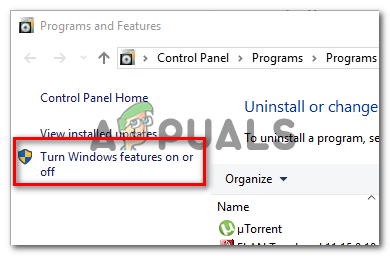
Turning Windows Features on - When you’re inside the Windows features screen, start by checking the box associated with .NET Framework 3.5 (this package includes .NET 2.0 and 3.0), then click Ok to save the changes.
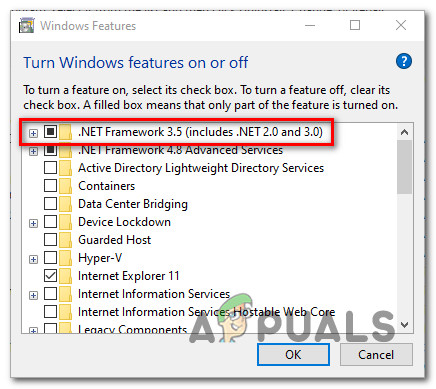
Enabling the 3.5 Framework - At the confirmation prompt, click Yes to initiate the procedure, then wait for the package to be successfully installed.
- Once the operation is complete, reboot your computer and see if the problem is fixed once the next startup is complete.
In case this method was not applicable, or you’re still encountering the same 0X800F080C error when installing the .NET Framework 3.5 via the Windows Features screen, move down to the next potential fix below.
Method 2: Running the .NET Repair Tool (if applicable)
If the first potential fix didn’t work in your case, our recommendation is to proceed with a series of troubleshooting steps that will allow you to fix any underlying issues with the .NET redist packages that are currently installed on your computer.
It’s very likely at this point to see the 0X800F080C due to remnants from an older .NET Framework package that is causing issues with the new installation.
Several affected users that were also struggling with this issue have reported that they finally managed to prevent new instances of the 0X800F080C error from occurring by running the .NET Framework Repair Tool – This is a tool that will automatically scan your computer and fix any .NET dependencies that might be creating issues.
If you haven’t tried running the .NET Repair tool, follow the instructions below for step by step instructions on doing so:
- Start by opening your browser and access the Microsoft .NET Framework Repair tool download page. Once you’re inside the page, click on the Download button (under Microsoft .NET Framework Repair Tool).
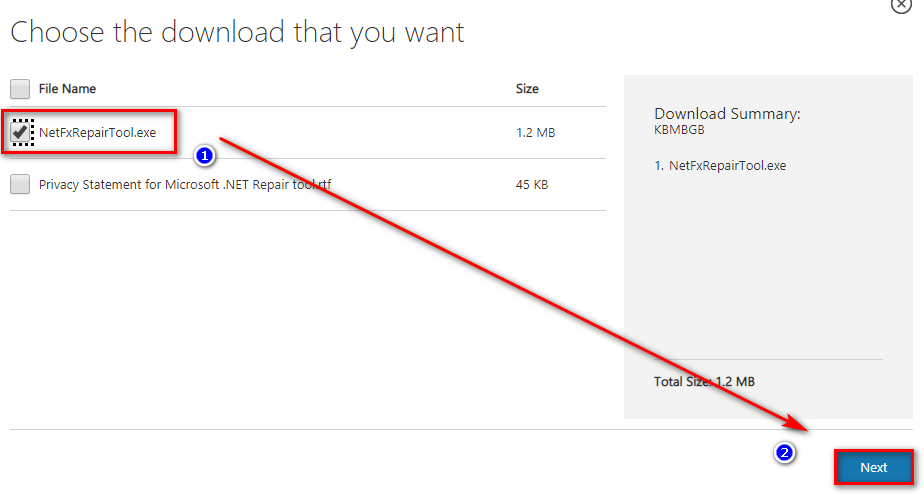
Running the .NET repair tool - At the next screen, start by checking the box associated with NetFxRepairTool.exe while unchecking everything else. Next, click on Next to advance to the next menu of the NetFXRepair Tool.
- After the download is complete, double-click on the installation executable that you’ve just downloaded, then click Yes when prompted at the UAC (User Account Control).
- Once the download is complete, double-click on the executable that you’ve just downloaded and click Yes at the UAC prompt to grant admin access.
- Inside the Microsoft .NET Framework Repair Tool, follow the on-screen instructions and check the box associated with I have read and accepted the license terms when prompted by the ToS before clicking on Next to move forward.

Opening the .NET Framework Repair tool - Immediately, the utility should have already begun the scanning of the .NET dependencies installed on your computer. Wait patiently until the process is complete.
- After the operation is finally complete, click on Next to automatically apply the repair strategy that the utility recommends.
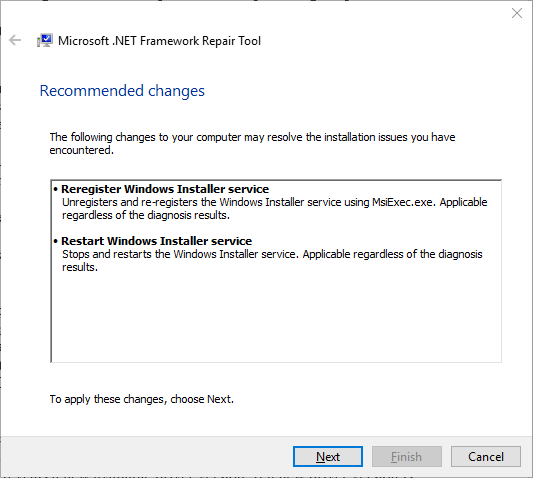
Repairing the .NET Framework - After the fix is successfully applied, click on Finish to complete the process. If you’re not prompted to restart automatically, do it yourself and see if the 0X800F080C error code is resolved the next time you attempt to install a new .NET Framework version.
If you already ran the .NET Framework Repair utility and you’re still seeing this kind of issue, move down to the next potential fix below.
Method 3: Running DISM and SFC Scan
If the first 2 fixes above have allowed you to fix the 0X800F080C issue in your case, the next thing you should do is utilize a couple of utilities (SFC and DISM) that are capable of fixing the system file corruption that might be affecting your operating system’s ability to handle the installation of new .NET Framework packages.
NOTE: System File Checker and Deployment Image Servicing and Management are two built-in tools that are equipped to fix the most common corruption instances that might trigger the error when attempting to install missing .NET Framework dependencies or when opening certain applications.
If you haven’t deployed this utility yet, start by going for a System File Checker scan since you can do it without requiring an active internet connection.
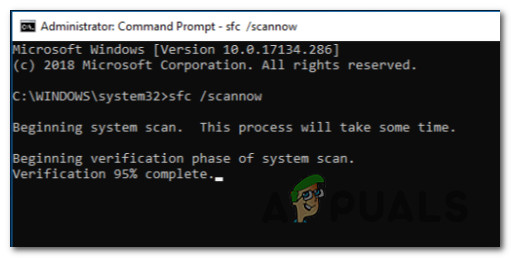
Note: Keep in mind that SFC is an entirely local tool that works by using a locally stored cache to replace corrupted system file items with healthy equivalents. Once you deploy this method, it’s important not to interrupt this type of scan since (these might cause additional logical errors).
IMPORTANT: If you are encountering this issue with a traditional HDD instead of a more modern SSD, expect this process to take up a couple of hours. Keep in mind that this utility has a tendency to freeze temporarily – If this happens, don’t close the window and wait for the real-time tracking to return.
When the SFC scan is finally complete, reboot your computer and see if the ‘The Requested operation cannot be performed on a file with a user-mapped section opened’ error code is finally fixed.
In case it isn’t, move forward by initiating a DISM scan.
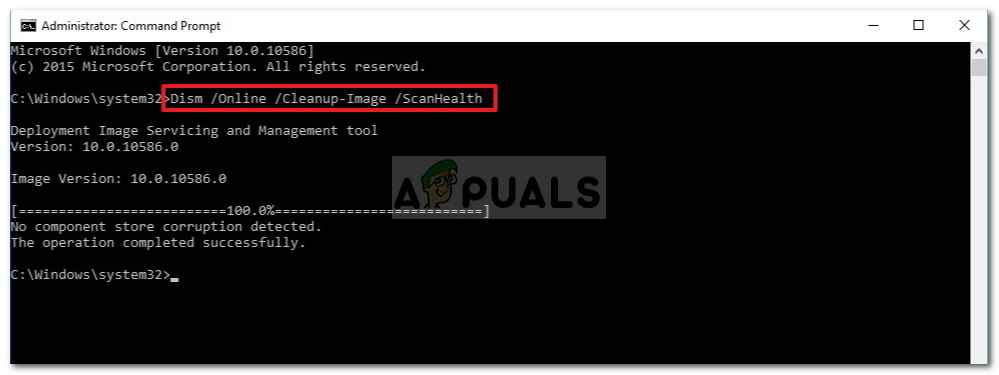
Note: As opposed to a regular SFC scan, DISM uses a component of Windows Update to replace corrupted Windows file instances with healthy copies downloaded over the internet. Because of this, you need to ensure that your Internet connection is stable before starting this operation.
Once you’ve completed both DISM and SFC scans, reboot your computer and use your computer normally to see if you still end up seeing the 0X800F080C error code when running a Windows 10 backup.
Method 4: Refreshing every Windows Component
If none of the other fixes above have allowed you to resolve the 0X800F080C, there’s a big chance that you’re actually dealing with some kind of system file corruption that cannot be resolved conventionally.
In this case, your best hope at fixing the issue conventionally is to reset every WIndows component with a procedure like a clean install or install repair (in-place repair). This way you’ll end up resolving every potential corrupted service that might be preventing you from opening 3rd party programs or install a missing .NET Framework infrastructure.
The easiest procedure out of the bunch is clean installation. But unless you’ll back up your data in advance, you can expect to lose all your personal data present on your OS driver – The major advantage of this method is that you will not be required to use compatible installation media.
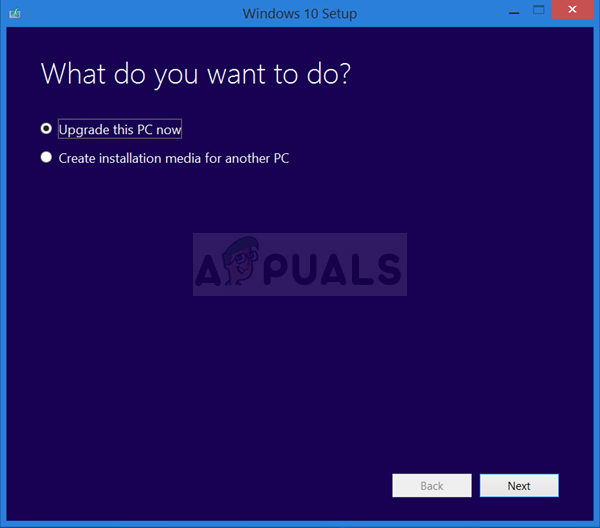
However, if you’re looking for the focused approach, you’ll need compatible installation media to initiate a repair install (in-place repair procedure).

As opposed to clean installing, this operation is considerably more tedious, but the main advantage is that you’ll be able to refresh every potentially corrupted component without losing data from your apps, games, documents, and personal media that’ currently stored on your OS drive.





